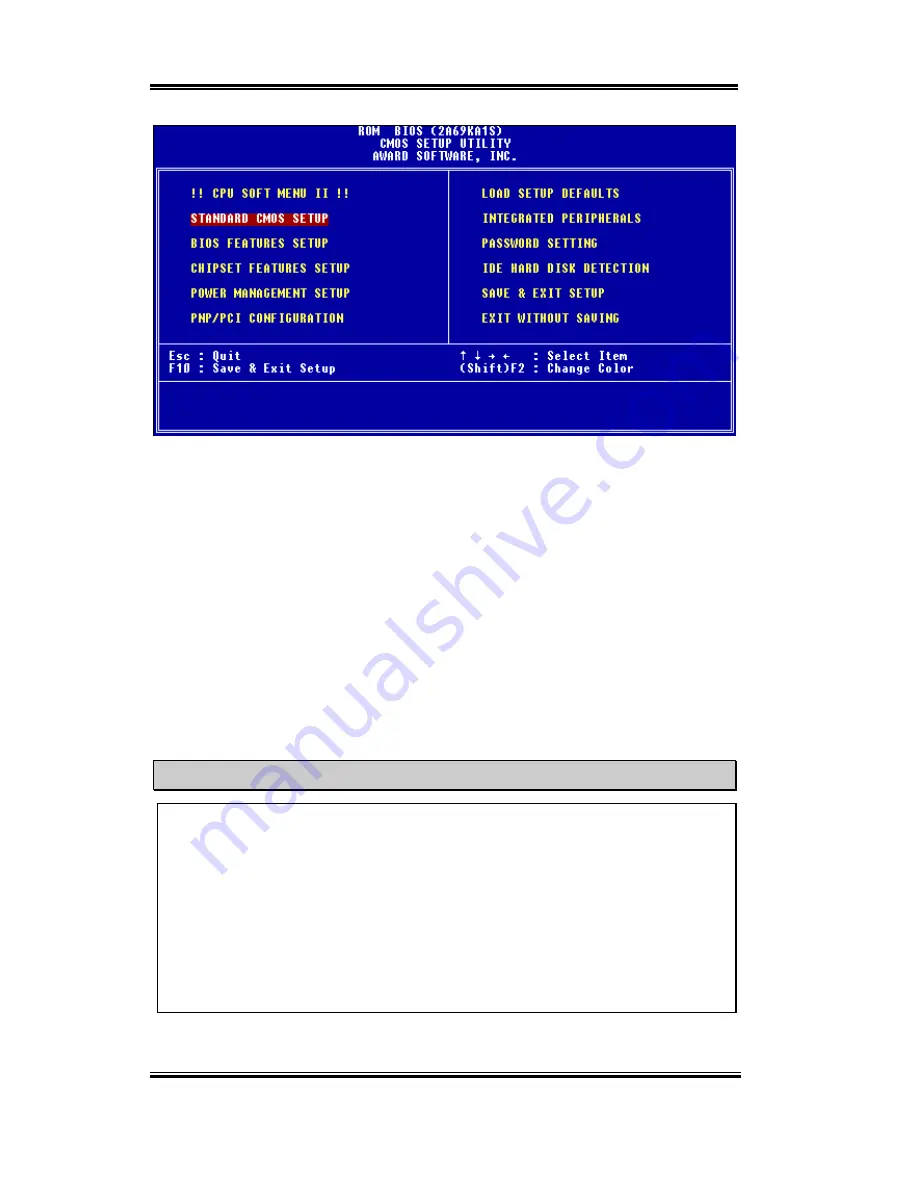
3-2 Chapter3
BP6
Figure 3-1. CMOS Setup Utility
In the BIOS Setup main menu of Figure 3-1, you can see several options. We will explain
these options step by step in the following pages of this chapter, but let us first see a short
description of the function keys you may use here:
!
Press Esc to quit the BIOS Setup.
!
Press
↑↓←
→
(up, down, left, right) to choose, in the main menu, the option you want
to confirm or to modify.
!
Press F10 when you have completed the setup of BIOS parameters to save these
parameters and to exit the BIOS Setup menu.
!
Press Page Up/Page Down or +/- keys when you want to modify the BIOS parameters for
the active option.
Computer Knowledge: CMOS Data
Maybe you have heard somebody saying that their CMOS DATA was lost. What is the
CMOS? Is it important? The CMOS is the memory used to store the BIOS parameters
that you have configured. This memory is passive. You can read its data, and you can
also store data in it. But this memory has to be powered by a battery, in order to avoid
any loss of its data when the computer is turned off. Since you may have to change the
CMOS battery when it is out of power and if doing so, you will loose all CMOS data,
therefore, we recommend that you write down all the parameters of your hardware, or to
put a label with these parameters on your hard disk.
Summary of Contents for BP6
Page 2: ......
Page 4: ......
Page 10: ...1 6 Chapter1 BP6 1 4 The System Block Diagram Figure 1 3 The system diagram of BP6 ...
Page 12: ...1 8 Chapter1 BP6 ...
Page 78: ...B 6 Appendix B BP6 ...
Page 82: ...C 4 Appendix C BP6 ...
Page 96: ...D 14 Appendix D BP6 ...
Page 102: ...E 6 Appendix E BP6 ...
















































